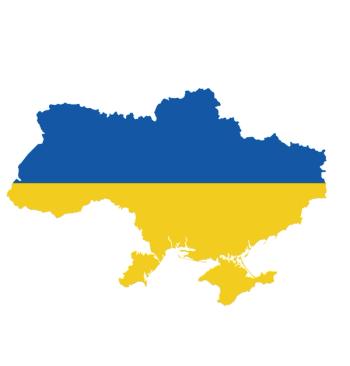
- Psychiatric Times Vol 15 No 4
- Volume 15
- Issue 4
PTSD in Survivors of Rwanda's 1994 War
In May 1997, a young Rwandan girl came to a clinic in Kigali reporting nausea and the feeling of insects crawling on her face. She complained of the strong smell of feces and grew increasingly agitated and fearful, describing vivid images of people trying to kill her at that moment. For months she had vomited at the sight of avocados, and for three years she had been unable to tolerate the sight of rice.
In May 1997, a young Rwandan girl came to a clinic in Kigali reporting nausea and the feeling of insects crawling on her face. She complained of the strong smell of feces and grew increasingly agitated and fearful, describing vivid images of people trying to kill her at that moment. For months she had vomited at the sight of avocados, and for three years she had been unable to tolerate the sight of rice.
During the evaluation, she related that her parents and siblings had been murdered in the spring of 1994 and that she had been severely wounded. The perpetrators, thinking she was dead, had thrown her into an open public toilet, where she lay for one week among feces and maggots-white maggots resembling bloated grains of rice-feeding on the avocados that fell on her from a tree above the toilet.
In February 1997, outside Rwanda's capital of Kigali, a roadblock stopped a public bus on the Kigali-Gisenyi road. Armed men ordered the passengers to separate according to ethnic allegiance. The armed men then gunned down those suspected of ties with the current regime and let the other passengers go. In January 1998, Rwandan genocide perpetrators entered a working brewery and murdered 30 workers.
Is the War Over?
Rwanda's 1994 civil war officially ended in July of that year, but as massacres and episodes of genocide continue to erupt sporadically within and around Rwanda's borders, the many faces of posttraumatic stress disorder (PTSD) continue to surface in dramatic ways. Each April through July, the anniversary of the genocide, the Trauma Clinic in Butare sees a parade of people with severe PTSD.
In April 1997, more than 30 teenagers from Nyanza Secondary School attended a reburial ceremony of the remains of their relatives who died in 1994. They developed acute emotional reactions such as agitation, seeing vivid images of genocide and weeping for over two days after the ceremony ended. The children fled the scene; the government ordered the school to close.
The same phenomenon happened in Nyamata in a similar memorial service. Closer investigation by the school faculty and a consulting psychiatrist suggested mass hysteria as the most likely explanation.
The horrors of the civil war in Rwanda have no match in recent history. Never before have so many civilians (at least 500,000) been killed so rapidly (within 3 months) by hand-to-hand combat, primarily with machetes and short-range firearms.
The most active perpetrators were young men from rural villages. The majority of them had no prior combat experience and were trained in the militia of the ruling party. The majority of the victims were innocent civilians, often neighbors of the perpetrators, and sometimes friends or extended family members.
In April 1994, high government authorities initially sanctioned genocide by explicit commands transmitted by word-of-mouth and over the radio. Bishops of the Anglican and Catholic churches did nothing to discourage the killing. In a culture that traditionally accords its leaders high respect, such betrayal defied the public trust.
Following the genocide, the exodus of refugees was rapid and enormous: Over 2 million refugees fled into Zaire and Tanzania by the end of August 1994, and most remained exiled for over two years. The pervasive effects of the genocide, massacres and refugee exodus have spared no one. Every family has experienced maiming, torture or death; each family has witnessed atrocities, lost a home or a family member to refugee status. Many citizens remain missing. And in the three-and-a-half year wake of these events, no satisfactory explanation has emerged for why such unprecedented genocide and massacres should have happened in Rwanda at this time.
PTSD Epidemic
No one knows how prevalent PTSD is in Rwanda, but according to our recent survey its prevalence may approach 20% in the adult population-much higher than in other war-torn countries.
The sudden, overwhelming trauma afflicting most civilians and the persistence of unpredictable threats four years after the "end" of the war (a period now commonly known as "the insecurity" in Rwanda) have caused an epidemic of PTSD and related psychiatric disorders. And yet only one study of the recent prevalence of psychiatric disorders in Rwanda has been published (Hagengimana, 1997).
To assess the exposure to trauma and the prevalence of psychiatric disorders, Hagengimana completed a door-to-door community survey in 1996. By interviewing the household members in various neighborhoods in Kigali and several outlying towns, he collected data on a sample of 157 citizens between the ages of 8 and 60. Each subject completed the Kinyarwanda translations of the Harvard Trauma Questionnaire and the Standardized Psychiatric Interview, administered by the investigator as an interview.
Fifty percent (79 out of 157) met DSM-IV criteria for a psychiatric disorder. The most common diagnosis was acute grief reaction (25%), but depression (22%) and PTSD (20%) were also common. The average number of traumatic events during the 1994 war reported by each subject was 15. Four of these events were significantly related to the diagnosis of PTSD: forced isolation, the helpless witnessing of atrocities, rape and loss of parents. Treatment for any of these disorders was rare.
Anecdotal support for the findings of this small pilot study comes from the observations of physicians and nurses working in primary care clinics around the country. Emmanuel Gasakure, M.D., a cardiologist and secretary of the faculty of medicine at the National University of Rwanda in Butare, reports that he continues to see many patients with minor physical complaints who are unable to function due to unnamed psychological distress.
Treatment Obstacles
The growing burden of mental illness in Rwanda remains largely unknown and untreated. The culture and its language, Kinyarwanda, still lack words for common depressive and anxiety syndromes. Only since the 1994 civil war has a word emerged for PTSD: ihahamuka, which means "breathless with frequent fear."
Substance abuse, particularly alcohol dependence, and smoking has risen dramatically since the war, according to Hagengimana's study.
Two psychiatrists serve a population of 8 million, so specialty mental health treatment is rare. Mental health treatment is usually delivered in outlying clinics or at Rwanda's only psychiatric hospital (outside Kigali) by a few nurses untrained in psychiatry. Other treatment is delivered through the primary care system and by traditional healers. Psychotropic medications have been ample at the hospital but scarce in the rural clinics, so the incentive to diagnose mental illness remains low where pharmacologic treatments are scarce.
Public health experts in Rwanda generally agree that the highest risk groups for psychiatric disorders currently are widows, orphans and soldiers. Over 60 cases of PTSD among soldiers have presented to the clinic in Butare, mainly in the form of conversion and dissociative reactions.
One soldier, referred from the front line, presented with aphonia, pseudoparalysis of the right side of the body and contractions of the right hand, particularly the index finger (his trigger finger).
Another man, an escort for a top officer in the army, lost his siblings and parents in the 1994 genocide. Although he wants to leave the army, his sense of duty prevents him. In January 1998 he lost his auditory acuity and developed la belle indifference. Audiometry done in the Ear, Nose and Throat (ENT) service was normal.
Signs of a PTSD epidemic abound in Rwanda, but no one knows the size and severity of the trauma-related psychiatric disorders. The barriers to further study of the prevalence and severity of mental disorders are the same barriers that limit access to care; namely, insufficient medical resources, competing political agendas and inadequate public awareness, both within Rwanda and around the world, of the toll of mental disorders related to the 1994 war.
References:
Reference
1.
Hagengimana A, Mburu J, Kang'ethe R, Ndetei D, Wulsin L (1998), PTSD in Survivors of Rwanda's 1994 War. American Psychiatric Association Annual Meeting. New Research #621.
Articles in this issue
over 27 years ago
Inside Outover 27 years ago
Executing the Mentally Illover 27 years ago
SAMHSA Study Uncovers Increasing Substance Abuse Among Young Girlsover 27 years ago
Learning the Shapesover 27 years ago
Turf War: Will State Hospital Patients Suffer?over 27 years ago
Is There a Common Basis for All Addictions?over 27 years ago
New Prescription for Paraphilia?Newsletter
Receive trusted psychiatric news, expert analysis, and clinical insights — subscribe today to support your practice and your patients.















